| |||||||||||||||||||||||||||||||||
| Reasons > Scholarship > Con: Professor Dr. Gary Habermas, Phd |
| Scholar or Myth maker? | Yes! | History of Scholarship | Amateur Scholarship | |
| Con: J. Z. Smith | Con: AD Nock | Con: BM Metzger | Sourcebooks | |
| Con: Habermas |
| Literary analysis of scientific questions |
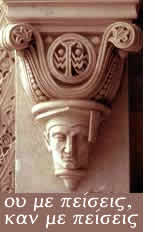 |
The scholarship of Dr. Gary Habermas, PhD, MA, BRE Chairman of the Department of Philosophy & Theology AT Liberty University, the Largest Christian University in the World AND Distinguished Research Professor
|
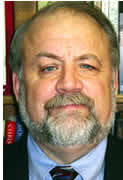 ghabermas@liberty.edu |
|
Habermas-Licona-Craig
are trying to use literary analysis Greg |
||
Proving God Scientifically 
By the time you're done with this page, you'll see this reasonable faith business for what it is: myth. These smart, friendly Christian philosophers make up facts to get their "science" to come out the way they know is has to—Jesus is God. Beautiful. |
 |
|
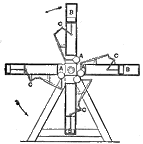
|
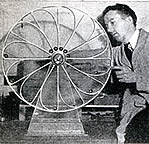 |
|
Perpetual motion In fact, overbalanced wheels never rotate forever. Friction drains away kinetic energy, and they all always stop. In spite of clever engineering by inventors as smart as Leonardo, the simple principles of friction and energy make perpetual motion a classic archetypal exemplar of paradigmatic textbook crackpot science. |
|
 |
But before we get too full of ourselves, here's a challenge. Analyze a perpetual motion machine using just the facts and reasons it's inventor used. Suppose you didn't know about friction and energy. Suppose all you knew was what the inventor considered: levers and gears and gravity. Now, pick one of these machines, and say why it doesn't work. Not so easy, is it? Look at the pictures. We want them to work. They ought to work. But they don't. Seeing why any particular perpetual motion machine doesn't work can be way hard. Without an abstract understanding of what's going on, even smart, friendly philosophers can get sucked into crackpottery. |
|
Crackpot apologetics |
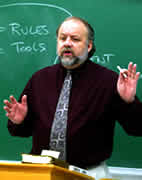 |
||
|
Let's try an example. Away back in Jesus' time walking on water was a standard miracle. Let's investigate whether people back then really did walk on water. For starters, let's agree that according to our understanding of how things work, Walking On Water never happens . |
|
 |
||
|
Our model has atoms and molecules and solids and liquids and gravity. If you get a bunch of solid person molecules to step on the surface of a bunch of liquid water molecules, gravity makes the solid people molecules sink. Leaving aside tricks like they're wearing canoes for shoes, if a person stands on water and doesn't sink, then molecules and atoms and gravity didn't work the way our model says they work. Walking on water isn't just unexplained by our model, it is contrary to it. According to our model of how the world works, walking on water is impossible. |
|
Which is pretty much the point. >> |
|
|
An ancient Walk On Water story—is it true? You and I have decided people cannot walk on water but here, in the blue box, direct from the pens of the ancients, is a bible time story of people who did just that. >>
|
"Did you see that?" said I — "the Hyperborean flying, or stepping on the water?" "Certainly," said he, "with brogues on his feet such as people of that country commonly wear. |
| Lucian, Lover of Lies, Chapter 13 (2d century AD), -- which you can find in: Henderson, Jeffrey. Lucian III (1921/ 2004), pg. 339 |
|
There are a couple ways to analyze whether Lucian's Walk On Water story is true. That's if you really don't see that pre-scientific cultures are full of this sort of magic, and you really really think ancient magic stories need scholarly analyzing. If you do think that, here are two methods of decidance:
|
|||
|
What the Haber-method asks us to believe happened is not possible. Either Lucian's story, like tens of thousands of other primitive magic stories from every corner of the world, is phony, or our atoms, molecules, and laws of nature model of the world is wrong. Pseudo-science Habermas-Licona-Craig are trying to use our laws of nature to prove something happened that violates our laws of nature.
|
|
||
|
That's it. That's all you need to know to be absolutely certain Habermas-Licona-Craig miracle proofs are wrong. |
|
|
Myth
But pretty soon folks are not just picking facts, they're stretching facts. George Washington the boy cut down a tree but 'fessed up, because He Could Not Tell a Lie. Mother Teresa cured cancer With Her Holy Touch. Experts say the John Rylands paperus proves scientifically the Gospel of John was written before 125 AD. People who stretch facts like this are not liars. Remember, they're
telling a story whose meaning they already know. They're not
lying, they're filling in details as they know they must have
happened. And of course when stretchers fill in details, the facts they choose are facts that make sense to them, to their culture, to the time and place in which they live. When the person who wrote the Gospel of Matthew filled in the bit about Jesus' birth, he included divine prophesy and magic dreams, because those were standard ideas away back then. This makes it easy for us to spot old myths; they're stretched out with ideas we don't believe. Prophecy. Magic dreams. But it makes it hard for us to spot modern myths; they're stretched out with stuff from our own time and place, stuff from our culture. Habermas-Licona-Craig stretch their stories with "facts" about science and expert opinion—just the sort of stuff we ourselves are suckers for. |
|
Deconstructing the Habermas-Licona-Craig
apologetic Habermas-Licona-Craig ideas about Jesus rising from death begin and end with the bible. The bible's ideas about people rising from the dead were ideas common in ancient Mediterranean culture, which explained rising from the dead the same way it explained lots of things—as caused and controlled by the invisible power of purposeful God-beings. For Habermas-Licona-Craig, Jesus didn't just rise from the dead, He rose from the dead because an invisible God-being wanted it to happen, and made it happen. |
|
|
OK, fine. If you believe things happen because some people, and invisible
God-beings, have the power The problem the Three Apologists have is, modern people, the people they hope to bring to Jesus, don't believe in magic powers. "Scientific" apologetic has to sneak magic in on the QT. |
|
|
Now we know what to look for. To spot the trick in Habermas-Licona-Craig proofs, look for the step of the apologietic...
|
|
Myth Habermas & Licona's "Best Explanation
of the Data"
aa
& Scholars Say &
Hide the pea
Probability Science
Worldview Skeptics are unconvinced by Habermas-Licona-Craig miracle proofs because —even before they consider the evidence!— skeptics unreasonably and arbitrarily choose to believe miracles are impossible. Believers approach the evidence without preconceptions. They don't arbitrarily and unreasonably rule out miracles. Believers just go where the facts and data take them. The worldview business sounds pretty good. It ought to work. But we know it's trying to use our model of the world to prove something happened that our model says can't happen. It can't work. But why maybe isn't obvious.
|
|
No testimony is sufficient to establish a miracle. . . .When anyone
tells me, that he saw a dead man restored to life, I immediately consider
with myself, whether it be more probable, that this person should
either deceive or be deceived, or that the fact, which he relates,
should really have happened. |
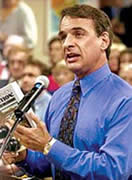

 He
[Nicodemus] came to Jesus at night and said, "Rabbi, we know you
are a teacher who has come from God.
He
[Nicodemus] came to Jesus at night and said, "Rabbi, we know you
are a teacher who has come from God.  "You
are joking," said Cleodemus: "I myself was formerly more incredulous
than you in regard to such things, for I thought it in no way possible
that they could happen; but when first I saw the foreign stranger fly—he
came from the land of the Hyperboreans, he said— I believed and
was conquered after long resistance. What was I to do when I saw him
soar through the air in broad daylight and
"You
are joking," said Cleodemus: "I myself was formerly more incredulous
than you in regard to such things, for I thought it in no way possible
that they could happen; but when first I saw the foreign stranger fly—he
came from the land of the Hyperboreans, he said— I believed and
was conquered after long resistance. What was I to do when I saw him
soar through the air in broad daylight and
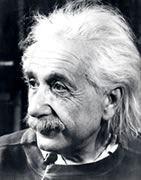
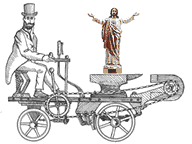 Perpetual
motion machines can't work because they are trying to create energy
out of nothing.
Perpetual
motion machines can't work because they are trying to create energy
out of nothing.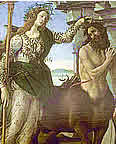



 have
worked out what they seem to see as a winning riposte: Worldview.
The apologetic goes like so:
have
worked out what they seem to see as a winning riposte: Worldview.
The apologetic goes like so: